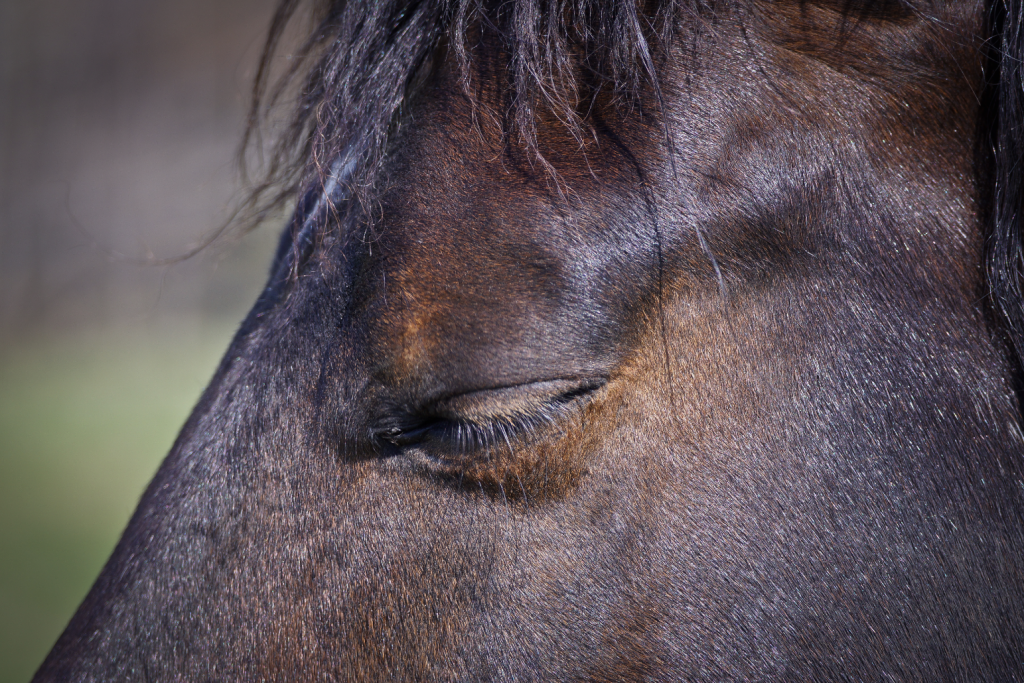My friend Michele sent me this picture of the Mustang Nelson lounging in his hay. Happy horse.
At the end of our time together this week I stood facing him, my hands softly stroking both sides of his shoulders. Minutes passed, and I could feel his head coming to rest on my shoulder, his breathing relaxation. Those moments felt holy, like a healing. I am so blessed.
Most people that I speak to are unaware of the ongoing brutal culling of the fragile herds of wild Mustangs that still run free in Wyoming, Nevada, Colorado and other parts of the West. The ongoing program of planned extermination of wild horses is well under way in the hands of the Bureau of Land Management in service of the cattle industry. The helicopter drivers are paid per horse trapped, so there is no particular intelligence guiding the way in which the horses are chosen. Many of the horses end up being shipped to Mexico for slaughter for the European meat market. Slaughter is NEVER humane, and horse slaughter in Mexico is an unregulated, unimaginable horror.
As a ten-year old stallion, Nelson would have met that fate were it not for the generosity of Equine Advocates, a sanctuary in upstate New York.
If you have not signed the petition that I have up to the right of this post, please take the time to do so. The plight of the few remaining wild Mustangs in depends upon our voices. Not the voices of hysteria, but the steady voice of right action, of compassion and respect for all beings. As Klaus Hempfing says, the horses are always innocent. We must speak for them.
I am incredibly blessed to work with Nelson. He is the anchor for many of my posts and has taught me many lessons about connecting being with horses to the rest of my life. I do not believe that sanctuary or ownership by a human is a solution for all the wild horses, just as zoos are not solutions for all the endangered elephants. We need the wild. We need to feel ourselves in relationship not just to what is tame, but to the wildness within and around us. The horses do just that. As poet James Wright says,
Yet the earth contains
The horse as a remembrancer of wild
Arenas we avoid.



